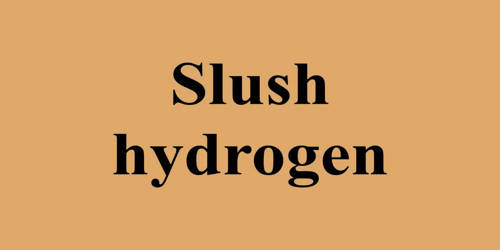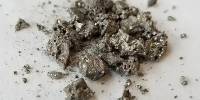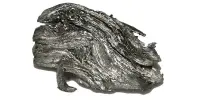Slush hydrogen is a combination of liquid hydrogen and solid hydrogen at the triple point with a lower temperature and a higher density than liquid hydrogen. It has been investigated as a fuel for advanced aerospace vehicles for over 20 years. It is a high-density, functional thermal fluid that enables the efficient transport and storage of hydrogen energy and electrical power. It is commonly formed by repeating a freeze-thaw process. It is a mixture of liquid and frozen hydrogen in equilibrium with the gas at the triple point. This is most easily done by bringing liquid hydrogen near its boiling point and then reducing pressure using a vacuum pump. The low density of hydrogen is a major inconvenience; therefore, a solid-liquid mixture called Slush hydrogen is used to increase the density and cooling capacity. The decrease in pressure causes the liquid hydrogen to vaporize/boil – which removes latent heat and ultimately decreases the temperature of the liquid hydrogen. A variety of advanced aerospace vehicles could benefit from the use of Slush as fuel.
Slush hydrogen production is a complex process involving heat and mass transfer. Solid hydrogen is formed on the surface of the boiling liquid (between the gas/liquid interface) as the liquid is cooled and reaches its triple point. It is a cryogenic solid-liquid two-phase fluid, wherein solid hydrogen particles having a particle diameter of several mm are contained in liquid hydrogen, featuring greater density and refrigerant heat capacity than liquid hydrogen. The production of 50% SH2 by the freeze-thaw batch process consists of several steps. These steps include vacuum pumping, freeze-thawing, and aging of the solid hydrogen. The vacuum pump is stopped, causing an increase of pressure, the solid hydrogen formed on the surface partially melts and begins to sink. The solid hydrogen is agitated in the liquid and the process is repeated.
The resulting hydrogen slush has an increased density of 16–20% when compared to liquid hydrogen. It is proposed as rocket fuel in place of liquid hydrogen in order to improve tankage and thus reduce the dry weight of the vehicle. It is a mixture of liquid hydrogen and solid hydrogen particles and is being considered as a spaceplane fuel or as a means of transport for hydrogen used as a source of clean energy.
















